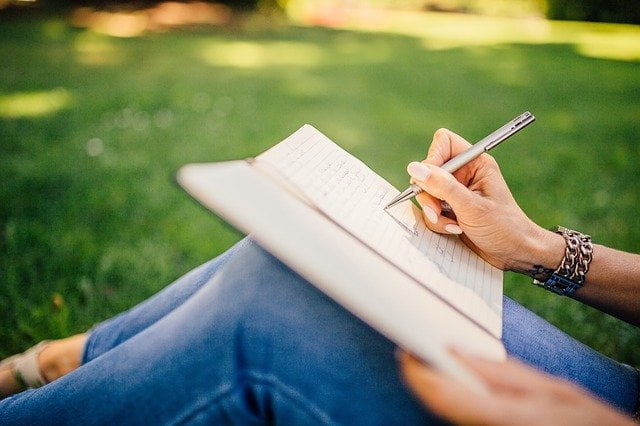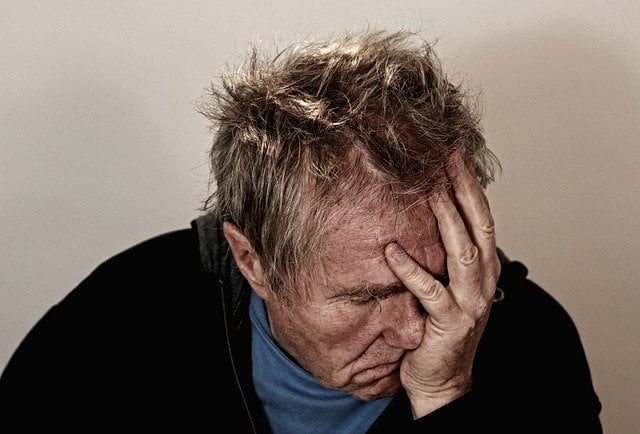- Home
- Types of Addiction
- Speed Addiction Help & Treatment
Speed Addiction Help & Treatment
Although the use of speed has been on the decline in the UK since 1996, it’s still being used by many people.
In 2020, there were reportedly 109,000 people using amphetamines in England and Wales.
Despite often being started as a “bit of fun”, this is a seriously addictive substance with many side effects.
Whether for you or someone you know, it’s always useful to learn about the substance, its effects, and what to do if you get yourself into unhealthy behaviours linked to it.
What Is Speed?

Speed is a street drug. It’s a type of amphetamine, which is classed as a stimulant.
It was originally derived from the ephedra plant, native to China and Mongolia.
The plant has particular chemicals (natural alkaloids and nitrogenous organic compounds) that inspired the chemicals in the production of man-made amphetamines.
By the time the end-user gets it is rarely “pure”.
It’s often cut with other substances so that dealers can make more money from it.
This makes it incredibly dangerous to inject.
Speed, also known as Billy, paste, and base, is often regarded as a party drug.
Depending on the dose, it might be felt for 30 minutes but is usually felt for 3-6 hours.
Users and those with addictive habits often continue to take speed meaning the effects can last for days.
What Does Speed Look Like?

Speed generally comes as a white powder, pinkish powder or as a colourful pill.
Users tend to snort it, swallow it as a “bomb” (wrapped in cigarette paper), rub it on their gums, or inject it.
Facts About Speed And Amphetamines

From the 1930s-1970s, amphetamine was one of the main ingredients in diet pills.
Nowadays, the fact it suppresses appetite means some users take speed to “manage” weight and this can be an addiction factor.
In the 1930s, amphetamine was included in nasal decongestant sprays to treat asthma.
With how much it was used to treat various conditions in the 1930s, related addictions to it became a real issue in the 1940s.
Due to its side effects, amphetamine is sometimes taken by athletes and students to enhance performance.
In the UK, the amphetamine-based medication lisdexamfetamine (Elvanse) and Ritalin are often prescribed to treat ADHD.
Amphetamines are also used to treat Parkinson’s and narcolepsy.
Although speed is a Class B drug, it’s treated as Class A if it’s been prepared to inject, meaning that any legal consequences would come with a tougher sentencing.
Other Types Of Illegal Amphetamine

New Zealand Valium/Diazepam New Zealand Valium/Diazepam
- MDMA (ecstasy), which is known to produce feelings of empathy, euphoria and energy. It’s often used as a party drug by users in the UK.
- Methamphetamine (aka crystal meth), which includes phenylethylamine that has been methylated twice. It’s much stronger than speed and MDMA. Although there is an epidemic of crystal meth use in the U.S, the UK hasn’t been as severely hit by it.
Both MDMA and methamphetamine come in crystal form.
How Does Speed Work?

Speed is a drug that affects the central nervous system.
It “speeds up” the messages that fire around the brain and between the brain and body.
It also affects the reward system of the brain which releases the chemical, dopamine.
This is the chemical that allows us to enjoy eating, drinking, sex, exercise, etc.
This drug actually disrupts the dopamine system, which controls feelings of pleasure and allows us to experience reward.
Speed removes dopamine receptors, meaning that the user is unable to produce dopamine naturally.
Therefore, without the drug, they’re left feeling depressed.
Suicidal thoughts and behaviours are common during the “comedown” where the substance leaves the body.
When speed is used regularly, it physically changes the structure of the brain, especially the prefrontal cortex.
This is why it takes a lot of work for a person to overcome cravings and it can take around a year of sobriety before the brain returns to full functioning in a balanced way.
Side Effects Of Speed

There are both the “desired” effects people seek, as well as the negative side effects.
There are also physiological changes in the mind and body.
The more speed is taken over a long period of time, the more physical and mental health damage it causes.
- Euphoria
- Excitement
- Increased energy
- Wakefulness
- Increased focus
- Dilated pupils
- Dry mouth
- Faster breathing
- Jaw movement, known as “gurning”
- Shakes
- Sweating
- Stop urination
- Insomnia
- Increased libido
- Increased heart rate
- Increased blood pressure
- Digestive issues
- Nose bleeds
- Cardiovascular collapse

Other serious effects and long-term physical health risks include:
- Malnutrition
- Ulcers
- Skin sores
- Mental health problems
- Brain damage
- Memory loss
- Confusion
- Paranoia
- Stroke
- Heart problems and/or attack
- Increased risk of blood-borne viruses if injected
Speed Overdose

In terms of the dangerous consequences of speed use, perhaps one of the most worrying situations is an overdose.
A speed overdose can cause seizures, coma and death.
f you suspect you may have taken too much or suspect someone else has overdosed on speed, call 999 immediately.
Do I Have A Speed Addiction?

If you use speed regularly, you might have developed problematic use or even an addiction.
If you experience any of the following symptoms, it is likely you have developed an addiction.
- Increased use -taking speed more often or taking more of it.
- Building up a tolerance where you need to take more speed to experience an effect.
- Not being able to stop taking speed despite its negative impact on your physical and mental health, relationships, work, finances, and future prospects.
- Loss of interest in other activities, especially those that are healthy.
- Experiencing withdrawal symptoms.
- Trying to stop using speed and not being able to.
What To Do If Someone You Love Has An Addiction

If you’re worried about someone you love having an addiction, learn a little bit about speed and its side effects.
Identify what it is you see in your loved one that might reveal they have a problem.
In a compassionate way, bring it up with them and express your concerns.
They may or may not be ready to start recovery.
It’s likely that they could also be in denial of the problem.
It can be useful to have information on treatment services to hand at this moment.
Make sure to speak with them when they’re sober, open and receptive.
It’s important for you to look after yourself while loving someone with an addiction.
You must ensure that you set strict boundaries around finances and also around keeping other family members safe.
Some organisations, such as Nar-Anon, can help you do this.
Withdrawal Effects Of Speed

People with a speed addiction will experience serious withdrawal effects.
These can be very uncomfortable and frightening.
- Shakes
- Sweating
- Paranoia
- Anxiety and panic
- Mood swings, including low mood and aggression
- Sickness and diarrhoea
- Muscle spasms
- Seizures
Of course, seizures can be especially dangerous and an ambulance should be called if this occurs to someone in front of you.
If you use speed with or ever withdraw around friends, it’s a good idea to establish a rule around this where someone would always call 999 if someone had a seizure.
This helps keep you safe too.
Psychological Addiction And Physical Dependency

There is some conflict as to whether speed causes a physical dependency.
Many professionals claim it’s a psychological addiction, meaning that severe and dangerous physical withdrawal symptoms aren’t experienced.
Other professionals and those addicted to speed would claim that speed does, indeed, create physical dependency as the brain comes to need it to function and serious physical symptoms take place during the withdrawal process.
Can I Quit Speed Without Professional Help?

It really depends on the severity of your speed use and the symptoms that occur during withdrawal.
If you have a severe addiction, it’s generally not safe to go “cold turkey”.
Entering a rehab clinic for a detox under medical supervision is the safest way to manage this.
If you’re unsure whether your speed usage is at the required level to warrant admission to rehab, call our expert team for a discussion about this.
What Are Your Speed Addiction Treatment Options?

There are two main types of treatment services you can enter for treatment of speed addiction; inpatient and outpatient.
Inpatient clinics are private clinics where you stay for a period of time.
This ensures you have no exposure to the drug and are under constant attention of friendly addiction specialists.
You receive a holistic treatment programme that addresses all aspects of the addiction and what you can do to recover.
Outpatient services are those where clients live at home as usual but will travel to a clinic for treatment.
Some private clinics offer this to residents who have stayed with them as part of an aftercare package.
The majority of outpatient services are NHS-funded drug and alcohol services, which are available in most towns and cities in the UK.
There, people will be at various stages of their addiction journeys.
There is usually a harm reduction service, a needle exchange, a drop-in clinic, some one-to-one input and group sessions.
Assessment Of Your Needs

Perhaps you’d like to find out more about your treatment options for speed addiction.
The Rehab Recovery team can give you tailored advice after a free assessment of your needs.
A chat with us will allow us to understand the severity of your drug use and make rehabilitation recommendations based on that.
Rehab Treatment For Speed Addiction

If you enter a private clinic for speed addiction, you’ll first be assessed by a member of staff.
This is so they can understand more about you, your personality, your addiction, and your lifestyle.
With this knowledge, they’ll then create a tailored programme of treatment for you.
All, however, go through a detox stage and therapeutic stage of treatment during their stay.
A Speed Detox

On entering rehab, the detox period immediately begins.
Unlike some other substances, speed doesn’t have a medication designed especially to taper you off it.
There are medications, though, that can be prescribed by the onsite clinical team to treat specific symptoms if they arise, including mental health symptoms.
This might be relevant, for instance, if someone was having a psychotic episode.
The Therapeutic Side Of Treatment

After the detox, you’ll then begin receiving therapies and alternative treatments.
This is where you start to understand more about the factors that caused the addiction, how to build self-compassion, and the skills to overcome cravings and manage recovery for the long term.
Rehab clinics offer evidence-based psychotherapies including Cognitive Behavioural Therapy and Dialectical Behavioural Therapy.
Both of these have proven to be effective at treating people to successfully face cravings in a healthy way, and also to manage emotional responses.
You’ll also take part in group therapies based around the 12 Step structure as well as SMART group approaches.
These are great at bringing the important shared experience of recovery between you and other residents.
On top of this, you’ll also get to enjoy alternative therapies linked to art and music, and also get to try yoga, reiki and mindfulness.
The Aftercare Programme

When the point comes to leave rehab, you’ll have an aftercare programme in place.
This will include any ongoing outpatient support the rehab might offer you, as well as links to ongoing social groups residents take part in.
There will also be a plan of how to approach your new abstinent lifestyle.
This will include ideas around hobbies, education, work and familial relationships.
How Long Is A Rehab Stay To Treat Speed Addiction?

It’s advisable to stay for around 28 days at rehab for speed addiction.
This is because it means you get fully acquainted with the approaches and techniques needed to remain sober.
It also gets you through that first month of cravings which can be challenging.
Dual Diagnosis: Speed Addiction And Mental Health

When you enter rehab and have an assessment, staff might explain to you that you have a dual diagnosis.
This means that as well as the addiction to speed, there might be another mental health condition.
It is very common in the addiction field for this to happen, and finding out you’re also suffering with another illness might not come as a surprise.
People with mental health conditions quite often turn to drugs to try and manage symptoms.
Likewise, using drugs regularly can cause mental health issues.
If this was to happen, your programme of treatment would be tailored to address both issues.
The Right Rehab And Recovery Options For You

If you’re interested in going to rehab, there are a number of things you need to consider so that you choose the right one.
Firstly, you want to ensure they have a high CQC rating as this demonstrates that they offer top-quality care.
It’s also useful to find out the level of training staff have, as well as what experience they have in substance misuse.
This can be very reassuring.
Finally, you want to think about where you’d like to go -some residents like to stay local as it’s easier for outpatient treatments or because it feels more comfortable.
Others like to distance themselves as far as possible from their usual drug-using places.
If you’d like support to find out about your most suitable rehab options, call Rehab Recovery today.
Get Help For Speed Addiction

Finding the right treatment service that can help you live free of an addiction to speed is often a complicated and time-consuming process.
If you need urgent help and are finding the wide variety of treatments on offer overwhelming, we are here for you.
Our speed addiction treatment assistance gives you:
- A free help and evaluation service to help you choose
- Guidance on the best treatment options for your circumstances
- Assistance in picking out the most cost-effective options
- Information on quality of care, best clinical practice and more
- Complete clarity so you can make the right choice of treatment
Call today in complete confidence on 08000 886 686 to take your first steps on the road to a happy and healthy new life.


